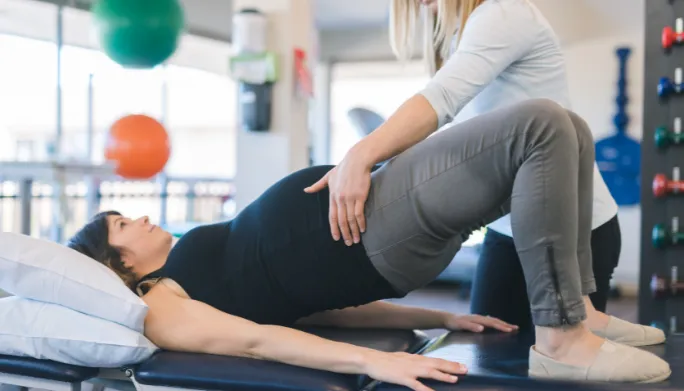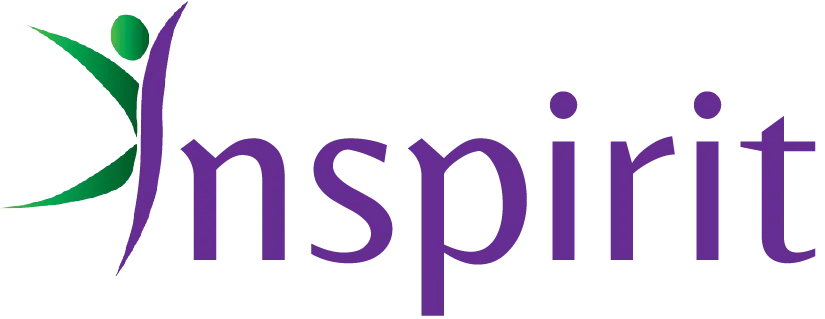Pregnancy & Postpartum Rehab Program in Green Bay

Inspirit Therapy’s pregnancy and postpartum rehabilitation program offers comprehensive prenatal and postnatal care to individuals at any point during their motherhood journey. Research shows that exercise improves the health and well-being of both mother and child during pregnancy and can improve delivery outcomes and speed up postpartum recovery, but it can be intimidating to know where to start. It can also be confusing to know which symptoms are normal and which are not during pregnancy and postpartum. That’s why the Inspirit team is here to help you navigate this process. Our goals are to keep you moving during pregnancy, optimize a healthy delivery experience, speed up recovery postpartum, and address any deficits that may remain even years following your birth experience.
Physical therapy during pregnancy
There are many ways physical therapy can be helpful during pregnancy. An assessment will determine the best treatment plan to suit the patient’s needs. These are some of the possible ways that physical therapy can be used during pregnancy:
Pain relief: Physical Therapy can help muscles and tendons, ligaments, as well as other body parts, function the way they were intended. This can help reduce pain sensations from the affected area to the brain. Pregnancy physical therapy is a great option for anyone suffering from pain.
Daily adjustments to your life: The growth of a baby can lead to a variety of changes in your daily life. Stress and strain may be affecting new areas. As a result, you may not be able to complete the same tasks at home that you did before. Also, you need to be able to adjust for sudden movements. You may also consider physical therapy to help reduce the discomfort caused by doing things differently.
Improving Labor & Delivery: You’ll need the most strength to deliver when labor and delivery are necessary. Participating in physical therapy before labor and delivery allows you to improve strength and learn techniques that will make it easier. Physical therapy often focuses on strengthening the abdominal muscles, hips, and back in order to ensure your body is ready for the birth of your child. Your physical therapist will help you prepare for the future.
Fluid retention: Physical therapy might be a good option for women who experience fluid retention during pregnancy. By using compression and massage techniques, it can reduce lymphedema. It is safe and can make your pregnancy easier.
Physical therapy can also be used to treat specific areas. Many women experience carpal tunnel syndrome during pregnancy. Your therapist will be able to help you develop treatment plans that target this area if it happens. Incontinence can be a problem for other women. Physical therapy is an option for those with other medical conditions such as multiple sclerosis.
PostPartum Therapy in Green Bay
It is important to be aware of the possible complications that can arise after childbirth and pregnancy. It has been proven that physical therapy can help new mothers get past some of the complications associated with childbirth and return to the things they love more quickly. What are the most common postpartum discomforts? How can physical therapy help?
Post Postpartum Pains
Abdominal Pain
Your uterus will contract after you have delivered your baby. This is a postpartum period. It aims to return your abdomen to its pre-pregnancy size. These muscle contractions can cause moderate-to-severe pain to the lower abdomen. The six-week period of contractions usually begins after childbirth. This is because the body releases a chemical called Oxytocin which causes abdominal pain.
Physical therapy is a great option if you are suffering from abdominal pain.
Postpartum Depression
With approximately 4 million new lives each year, postpartum depression rates are estimated to be between 10-20% for new mothers. Postpartum depression can often occur if mothers don’t find the right way to ease their post-childbirth pains.
Postpartum depression can affect women for many reasons. These include hormone changes, feeling overwhelmed and losing a sense of self.
Physical therapy can be used to help ease the transition and reconnect to your pre-baby body. It will create a customized exercise program to restore your body’s natural state, especially your pelvic floor. Physical therapy is a great way for new mothers to feel confident and tackle depression symptoms.
You can exercise and do physical activity. This is a great way to get rid of negative thoughts. A physical therapist can help you return to pre-baby form and get the blood pumping through exercise. This will allow you to redirect some of your mental energy to more productive tasks.
Tailbone and Pelvic Pain
Your body will naturally change as you give birth to a baby. These areas can cause extreme pressure and swelling, which can lead to pain in other parts of the body. You should not ignore this discomfort. The pain can be managed with the aid of physical therapy exercises and coping strategies. Women often feel pain in the pelvic, hip, or tailbone after childbirth. It is important to take the necessary steps to alleviate pain in these areas.
Incontinence
The muscles of the pelvic floors become stretched and stressed after nine months of having a baby. This can often lead to fecal and urinary incontinence in women. There are many ways to get these muscles back to their pre-pregnancy state. A physical therapist can show you how to do it in the privacy of your home, at your car or while shopping.


